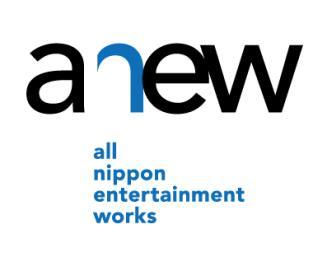 Over New York Comic Con Weekend, Bandai Namco and Sunrise held a panel that made a lot of announcements — one involved Gundam, and the other involved a franchise that’s now going to be taking the step to Hollywood fame. Or at least try to, as Tiger & Bunny will be adapted into a film. With Imagine Entertainment at the helm, let’s set up a bit of history, since you may not know who they are, or who else is backing this project.
Over New York Comic Con Weekend, Bandai Namco and Sunrise held a panel that made a lot of announcements — one involved Gundam, and the other involved a franchise that’s now going to be taking the step to Hollywood fame. Or at least try to, as Tiger & Bunny will be adapted into a film. With Imagine Entertainment at the helm, let’s set up a bit of history, since you may not know who they are, or who else is backing this project.
Imagine Entertainment: Imagine Entertainment was founded in 1986 by Ron Howard (acted as Opie Taylor in the Andy Griffith Show; directed Cocoon, Apollo 13, and produced Arrested Development) and Brian Grazer (Produced Parenthood, A Beautiful Mind, Frost/Nixon; named in 2007 as Time Magazine’s 100 most influential people) to create independently produced feature films, television programs and other original programming. Currently the site’s under construction, but their list of credits is on imdb. Erica Huggins, who worked on films such as James Brown’s biopic Get on Up, Rush, and Flightplan, is the President of Imagine and will be overseeing Tiger & Bunny.
All Nippon Entertainment Works: ANEW is a global entertainment studio that links world class filmmakers, the Hollywood creative community and studios with a consortium of major Japanese intellectual property rights holders to develop creative content, including films, books, toys, animation, and Manga, into global English-language motion pictures and television. They’re backed by a fund affiliated with the Japanese government. It looks like the company started in 2012, but in the past year or so is when they started to make their move: They’re teaming up with Edward Zwick and Marshall Herskovitz (Both created thirtysomething, My So-Called Life, and The Last Samurai) to produce a Hollywood version of Tohru Fujisawa (GTO) and Manabu Akishige’s seinen manga Soul ReVIVER, and they’re working with Nippon TV and Depth of Field to do a remake of Takashi Miike’s Shield of Straw.
I did try and get in touch with a few of the people that would be involved with the Tiger & Bunny project, but I was able to only get some answers from Senior Vice President of Development and Production, Annmarie Bailey, who explained why she thinks this time, Hollywood’s take on a Japanese based franchise will actually be successful.

Annmarie Bailey: We approached Sunrise/Bandai Namco initially in March 2012 but serious discussions took place that following Fall.
OASG: How did you find out about Tiger & Bunny, and how did it feel to eventually have it signed off to make this into a film?
Bailey: I was first exposed to it at the Tokyo Anime Fair, also in March 2012 and then I became immersed in the series a few weeks later. Having Sunrise’s and Mr. Ozaki’s support to create a live action film was deeply gratifying and surreal. For one, I had developed a great friendship with him over time and I couldn’t wait to work with him and help find a partner he would love. I also knew what an amazing privilege this was and the fan in me who loved the anime and the characters couldn’t help but be excited.
OASG: How did you get into anime? What about it attracted you to the medium?
Bailey: It was once I started working at ANEW that I began to really focus on anime more heavily. I started getting to the root of these amazing stories, beyond how cool they looked, and I realized there are so many hidden gems in Japan just waiting to be discovered. Tiger and Bunny is an extremely popular series, and it is a great choice for an adaptation, of course, but for every breakout hit in Japan, there are scores of smaller productions and lesser known anime which have equally appealing concepts and should not be overlooked for a Hollywood adaptation.
OASG: What have you grown to understand about anime fans?
Bailey: They are wonderfully loyal and will follow a property and brand for years. They care not only about the story, but equally about the person directing and designing the characters as well. Some of the best conversations I have had as a result of my position has been with anime fans pitching to me series I should see and having that great exchange together. I love their passion.
OASG: There has been some notable failures when it comes to adapting a Japanese media property into a Hollywood film. It’s early in the process, but what do you think will set adapting Tiger & Bunny apart from other properties?
Bailey: Since we are not optioning Tiger and Bunny from Sunrise, but rather, including Sunrise as a producing partner along with Imagine Entertainment, our goal is to enable Sunrise to have a voice in the room and collaborate together on what the adaptation should be. It will include creative elements and ideas from all of us involved.
OASG: What do you hope this adaptation will accomplish for not necessarily how people view anime, but how the medium is adapted into live action?
Bailey: My hope is that the Tiger and Bunny Hollywood film helps pave the way for more anime properties to be adapted successfully in the future, and adapted well, with creative considerations given to the original creator and/or right’s holder. They should have a voice in the room.

